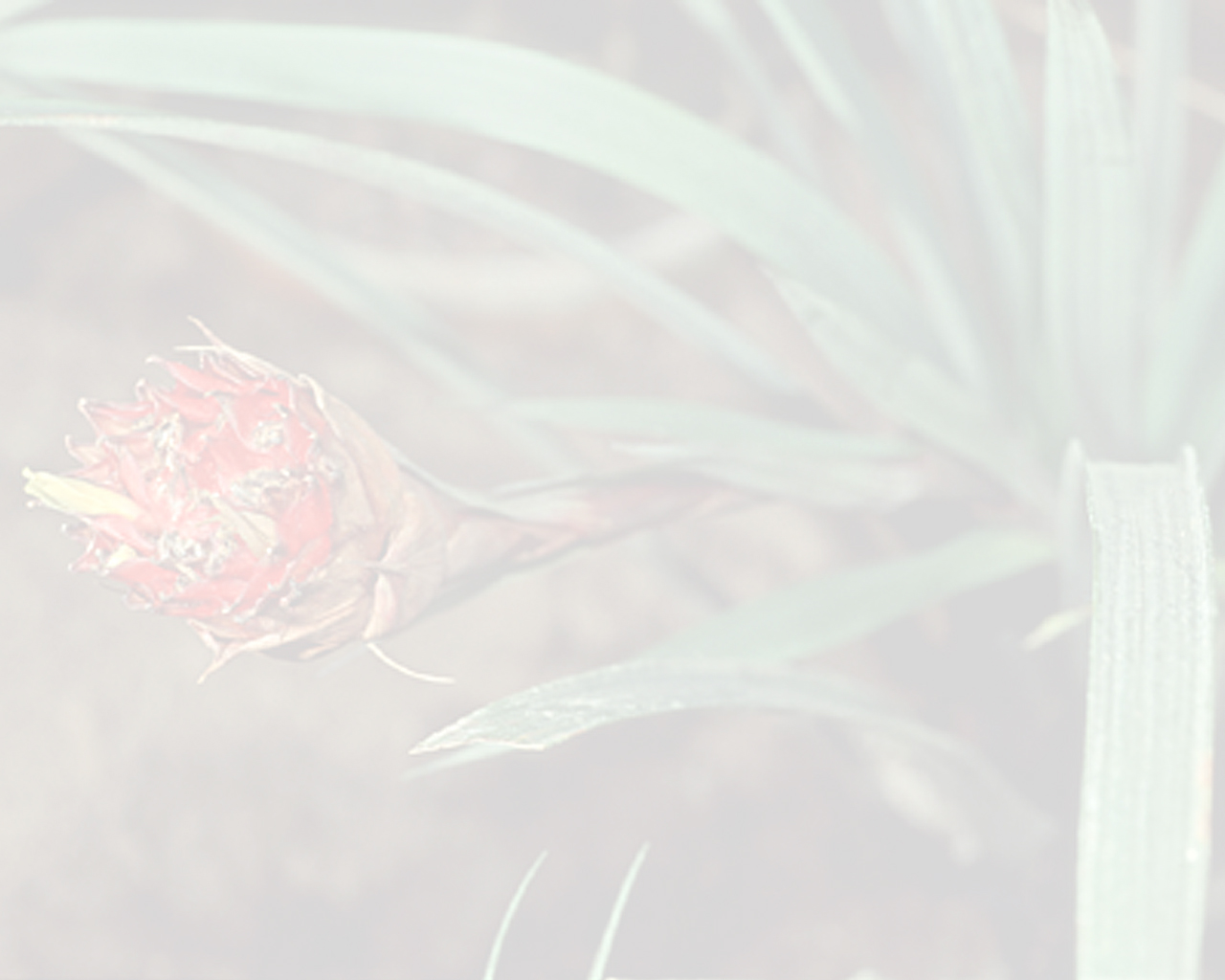Guzmania vanvolxemii (André) André ex Mez
Literature references:
*move your mouse pointer over the page numbers to see comment
Comments:
- Guzmania vanvolxemii vs. Guzmania mitis by Rolf Rawe in J Brom Soc 38(5): 202. 1986
In 1982, while collecting in Colombia and searching specifically for guzmania and large, high altitude, green-leaved tillandsias, I came across a small batch of G. vanvolxemi on the eastern side of the very high Quindio Pass.
These plants were growing on the steep road embankment and I managed to obtain only one specimen, all others being totally out of reach as is so often the case. Fortunately this lone plant survived the stresses of transport to Capetown and has now flowered for the first time. You can see from the cover picture that it is a superb species well worth cultivating.
The rosette is 60 cm in diameter and the whole inflorescence 90 cm long. The individual flowers are white and those which were pollinated are fruiting so that I can propagate this species.
The plant grows easily enough and I have it potted in fern roots and am growing it in a fibreglass-covered house where I keep all my other high altitude plants. During summer, the temperature reaches 30° C regularly, but I mist very frequently during the afternoon and early evening.
The plants are grown very much drier during winter when night temperatures will drop down to 5 ° C. This regime suits the plants very well and there are only a very few species from above 3000 meters which object to the high summer temperature.
[Dr. Lyman Smith points out that this is not typical G. vanvolxemii with a densely cylindric inflorescence but G. mitis, a synonym, with an open one. Significantly both types are from Quindio. Mr. Rawe has been told of this observation and concurs.]
Comment by Butcher. I am intrigued by this comment by L B Smith because he never treated G. mitis as a synonym of G. vanvolxemii and his records do not show G. mitis as coming from Quindio. In any event a later issue of JBS (which one?) corrected the name on the photo to G. vanvolxemii! —See Smith & Downs 1977

